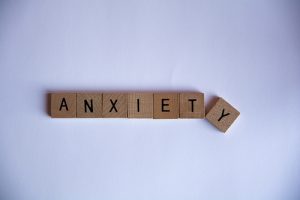ANAPHYLACTIC SHOCK:
EpiPens are utilized after signs and symptoms of anaphylactic shock are recognized; most common include (within minutes of exposure) hives, itching, swelling of the lips, tongue and throat, confusion, tachycardia, wheezing, chest tightness, and nausea (2016). Anaphylaxis can be caused by many triggers such as insect bites, food allergy, medicine allergy, changes in temperature, and so on. Anaphylaxis is sudden and can become fatal quickly; therefore, carrying an EpiPen (prescribed by your doctor) if you have extreme allergies can make the difference between life and death.
EpiPens hold an important life-saving synthetic substance called epinephrine, also known as adrenaline, which the body naturally produces and releases under stress. Epinephrine and adrenaline are exactly the same. Since it is produced naturally by the body, there are no absolute contraindications and is the ONLY first-line treatment for anaphylaxis (EpiPen 2016).
Many misconceptions regarding EpiPens exist, here I will discuss a few of them.
Myth: I only need to purchase one EpiPen; it can be used multiple times.
Fact: EpiPens are one-time use tools and you should have two available at all times. About one in five patients require a second dose after a severe reaction and it is possible a delayed response may occur up to 72 hours after the initial reaction (EpiPen 2016). Any further administration of epinephrine should be under direct supervision of medical personnel.
EpiPens expire after approximately one year; Brasted (2016) states after 18 months it is unknown how much of the epinephrine is still present. However, when faced with the option of no EpiPen or using an expired EpiPen, medical professionals suggest using the expired EpiPen as opposed to nothing at all.
Myth: Avoiding allergens eliminates the need for an EpiPen.
Fact: Even trying to avoid certain triggers, accidents can happen. Trace amounts of allergen can cause a reaction and at times, people do not recognize food allergens easily and can accidentally ingest a food they’re allergic to. It’s important to always be aware of the signs and symptoms of anaphylaxis and have access to two EpiPens.
Myth: I can inject EpiPen at the site of insect sting.
Fact: The EpiPen should only be injected into the middle of the outer thigh and in no other location. Intramuscular administration of epinephrine is necessary due to the fact that intravascular injection can be fatal; the thigh has the least amount of large blood vessels (Brasted 2016).
*Please keep in mind, after utilizing the EpiPen for anaphylactic shock, it is imperative to seek immediate medical attention.*
Step-by-Step use of Epi-Pen

INFORMATION ABOUT PURCHASING AN EPIPEN:
https://www.epipen.com/en/hcp/for-health-care-partners/for-pharmacists
FOR FURTHER INFORMATION, YOU CAN VISIT:
References
Brasted, I. D., & Ruppel, M. C. (2016). Anaphylaxis and Its Treatment. EMS World, 45(9), 31-37.
Guide to Using Your EpiPen® and Trainer Pen. (2017, March). Retrieved May 19, 2017, from http://www.epipen.co.uk/patients/epipenr-user-guide/
GrumpySam. (2016, January 11). Epipen autoinjector into ballistic gelatin. Retrieved May 20, 2017, from https://www.youtube.com/watch?v=vfx4qVsTFmg&feature=youtu.be
Tesluk, A. (2016, December 26). Live Anaphylactic Reaction and Use Of EPI Pen. Retrieved May 19, 2017, from https://youtu.be/MdBUZn1PG58
The official website for EpiPen® (epinephrine, USP) and EpiPen Jr® (epinephrine, USP) Auto-Injectors. (2016). Retrieved May 17, 2017, from https://www.epipen.com/en/hcp/sitecore/content/epipen/epipen-consumer/pages/home/what-is-anaphylaxis/facts-myths
What Happens during Anaphylaxis Medical Course. (2013, December 14). Retrieved May 17, 2017, from https://www.youtube.com/watch?v=9Qmzt94rRAw


